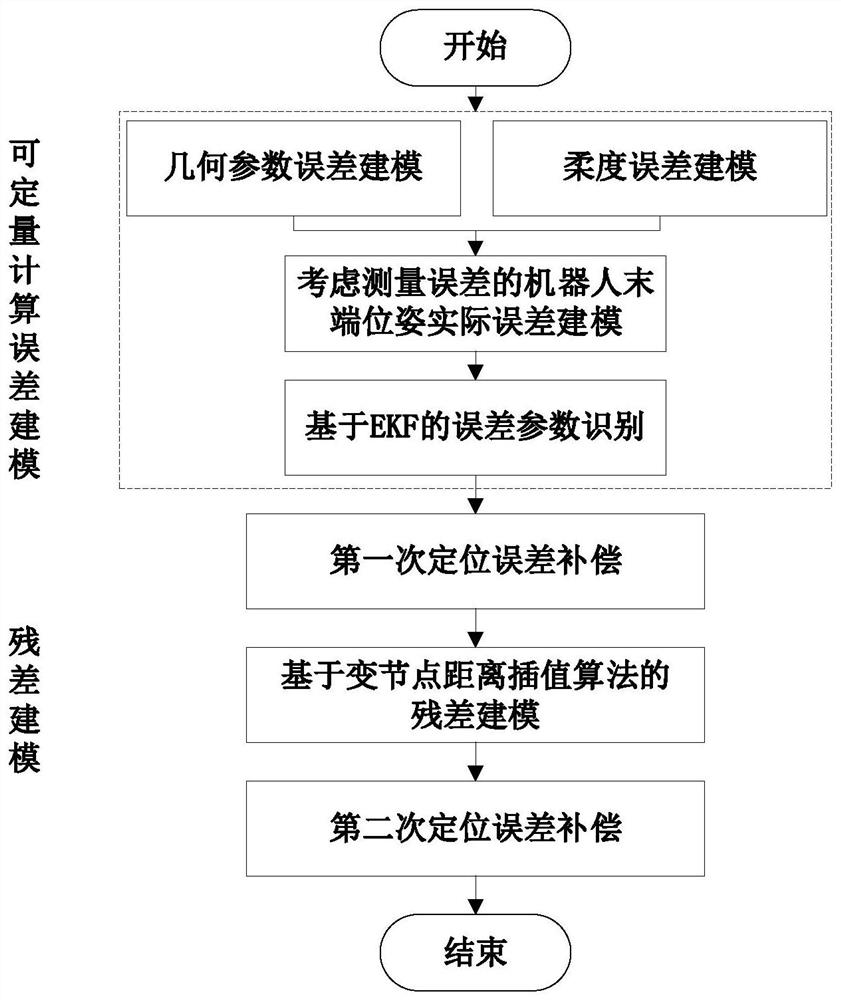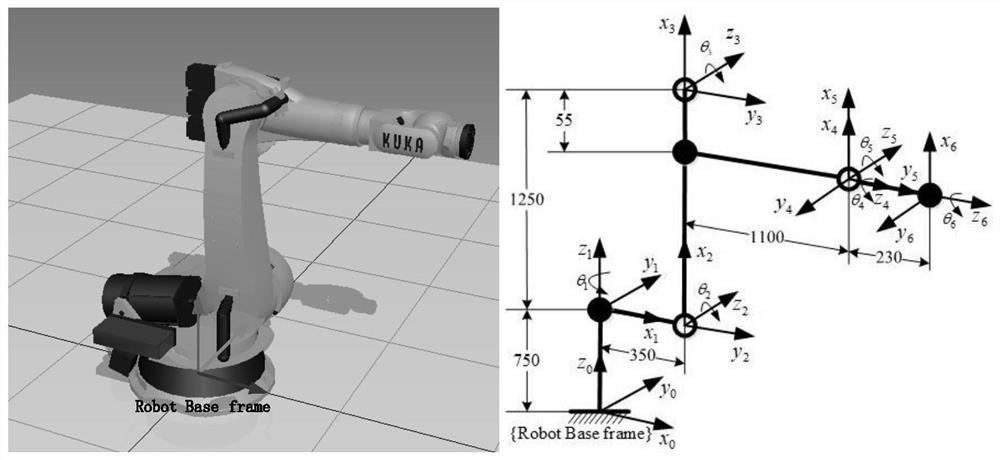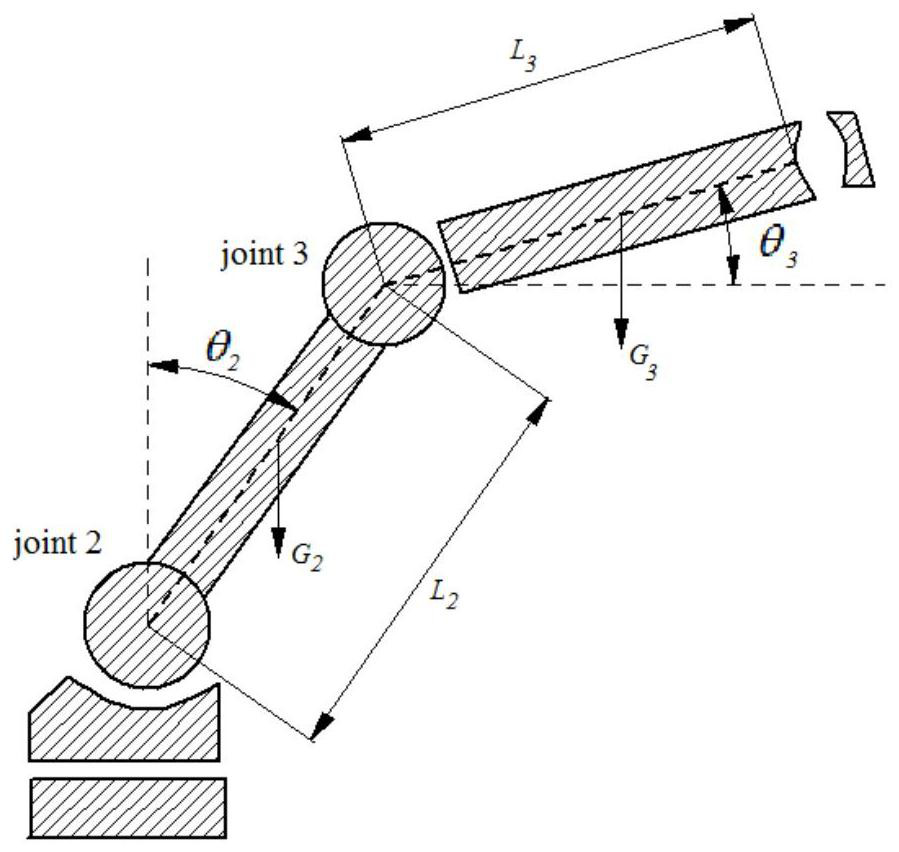Robot absolute positioning precision calibration method based on kinematics and spatial interpolation
A technology of absolute positioning accuracy and spatial interpolation, applied in manipulators, program-controlled manipulators, manufacturing tools, etc., can solve the problems of not considering the structural characteristics and motion characteristics of multi-joint robots, difficulty in building mapping models, and numerous sources of robot positioning errors. , to achieve the effect of improving absolute positioning accuracy, improving the lack of accuracy, and improving recognition accuracy
- Summary
- Abstract
- Description
- Claims
- Application Information
AI Technical Summary
Problems solved by technology
Method used
Image
Examples
Embodiment Construction
[0074] The embodiments described below by referring to the figures are exemplary and are intended to explain the present invention and should not be construed as limiting the present invention.
[0075] refer to Figure 1 to Figure 5 . This invention takes the KUKA KR210 industrial robot as an example, and uses the API T3 laser tracker as the measuring tool to measure the position of the end of the robot, to illustrate the geometric parameter error modeling and flexibility of the robot absolute positioning accuracy calibration method based on kinematics and space interpolation algorithm. The specific steps of error modeling, error parameter identification, residual error modeling and positioning error compensation.
[0076] S1. Construct the robot geometric parameter error model based on the MD-H kinematics method;
[0077] S2. Combining the robot's structural characteristics and force analysis to build a robot flexibility error model;
[0078] S3. Based on the established ...
PUM
 Login to View More
Login to View More Abstract
Description
Claims
Application Information
 Login to View More
Login to View More - R&D
- Intellectual Property
- Life Sciences
- Materials
- Tech Scout
- Unparalleled Data Quality
- Higher Quality Content
- 60% Fewer Hallucinations
Browse by: Latest US Patents, China's latest patents, Technical Efficacy Thesaurus, Application Domain, Technology Topic, Popular Technical Reports.
© 2025 PatSnap. All rights reserved.Legal|Privacy policy|Modern Slavery Act Transparency Statement|Sitemap|About US| Contact US: help@patsnap.com



